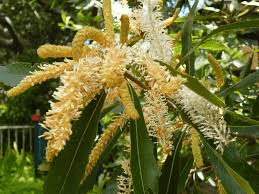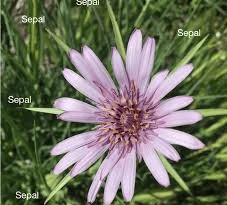The Barley Stalks: Economic Importance, Uses, and By-Products
Barley stalks are the main structural stems of the barley plant that support the leaves, flowers, and grain heads. These sturdy stalks emerge from the soil and grow upright, providing the framework for the barley plant’s above-ground growth.
Economically, barley stalks are crucial for supporting the development of the barley crop and ensuring optimal grain production. They provide structural support for the plant, helping to keep the leaves and reproductive structures elevated and exposed to sunlight for photosynthesis. This process is essential for the production of carbohydrates and other nutrients that fuel grain development and yield.
Additionally, barley stalks contribute to the efficient uptake and transport of water and nutrients from the soil to the rest of the plant. They contain vascular tissues, including xylem and phloem, which conduct water, minerals, and sugars throughout the plant. This vascular system ensures that essential resources are distributed efficiently, promoting healthy growth and development.
Furthermore, the strength and resilience of barley stalks can impact crop management practices such as planting density, irrigation, and harvesting. Sturdy stalks are less prone to lodging, which occurs when plants bend or break under the weight of grain or adverse weather conditions. Lodging can lead to yield losses and difficulties in harvesting, so selecting barley varieties with strong stalks is important for maximizing grain yield and quality.
The Economic Importance and Uses of Barley Stalks

1. Livestock Feed: One of the primary uses of barley stalks is as fodder for livestock. Cattle, horses, and sheep benefit from the fiber-rich content of barley stalks, which aids in their digestion and overall health. Farmers often utilize barley stalks as a supplemental feed during lean periods or as a regular part of their animals’ diet.
2. Mulching: Barley stalks find extensive use as mulch in agricultural settings. When shredded or chopped, these stalks serve as an effective mulching material that helps suppress weed growth, conserve soil moisture, and regulate soil temperature. This mulch layer not only nurtures the soil but also provides a conducive environment for crop growth and development.
3. Biofuel Production: In the quest for renewable energy sources, barley stalks emerge as a promising candidate for biofuel production. Through advanced processing techniques, such as fermentation and distillation, barley stalks can be converted into biofuels like ethanol. This bioethanol serves as a sustainable alternative to traditional fossil fuels, reducing greenhouse gas emissions and mitigating environmental impact.
4. Crafts and Decor: Beyond agricultural applications, barley stalks find their way into the realm of arts and crafts. Their unique texture and appearance make them ideal materials for crafting decorative items such as wreaths, floral arrangements, and seasonal displays. Barley stalks add a rustic charm to these creations, appealing to artisans and consumers alike.
5. Animal Bedding: Farmers and animal enthusiasts alike appreciate the absorbent qualities of barley stalks, making them a popular choice for animal bedding. Whether in livestock pens, stables, or pet enclosures, barley stalks provide a comfortable and hygienic bedding material that promotes animal welfare and cleanliness.
6. Composting: Barley stalks contribute to the production of nutrient-rich compost, a cornerstone of sustainable agriculture. When incorporated into compost piles or bins, barley stalks break down over time, enriching the compost with organic matter, essential nutrients, and beneficial microorganisms. This compost, in turn, nourishes the soil, fostering healthy plant growth and vitality.
7. Erosion Control: The erosion-resistant properties of barley stalks make them valuable allies in the battle against soil erosion. Whether used in erosion blankets, wattles, or other erosion control measures, barley stalks stabilize soil on slopes, prevent sediment runoff, and promote the establishment of vegetation. This, in turn, safeguards agricultural lands, infrastructure, and natural habitats from the detrimental effects of erosion.
8. Biochar Production: Barley stalks play a vital role in biochar production, a process that converts organic biomass into a stable form of carbon-rich soil amendment. Through pyrolysis, barley stalks are transformed into biochar, which enhances soil fertility, improves water retention, and sequesters carbon in the soil, contributing to climate change mitigation efforts.
9. Building Materials: Sustainable construction practices benefit from the inclusion of barley stalks in building materials. Whether in the form of straw bales or other innovative applications, barley stalks offer natural insulation, sound absorption, and fire-retardant properties, making them valuable components of eco-friendly buildings.
10. Animal Nesting: Birds and small animals find refuge and nesting material in barley stalks. Whether building nests or burrows, these creatures utilize barley stalks to create cozy shelters for themselves and their offspring, demonstrating the versatility of barley stalks in supporting biodiversity and ecosystem health.
Read Also: Sheep Milk Production Complete Guide
The Products and By-products That Can Be Derived From Barley Stalks

1. Bioethanol: Through a series of biochemical processes, barley stalks can be converted into bioethanol, a renewable fuel used in various industries, including transportation and energy production.
2. Biogas: Barley stalks serve as feedstock for biogas production, wherein anaerobic digestion breaks down organic matter to produce biogas, a renewable energy source composed primarily of methane.
3. Animal Bedding: Processed barley stalks are compressed into pellets or shavings for use as bedding material, providing a comfortable and absorbent surface for animals in agricultural and domestic settings.
4. Mulch Mats: Barley stalks are woven or compressed into mulch mats, which offer weed suppression, moisture retention, and erosion control benefits in landscaping and gardening applications.
5. Paper Pulp: Barley stalks undergo pulping and processing to produce paper pulp, which forms the basis of various paper and cardboard products, contributing to sustainable paper production practices.
6. Cellulose Fiber: Barley stalks contain cellulose fibers that can be extracted and utilized in textile manufacturing, insulation production, and the creation of biodegradable packaging materials.
7. Biochar: Pyrolysis of barley stalks yields biochar, a stable form of carbon-rich soil amendment that improves soil fertility, water retention, and carbon sequestration in agricultural soils.
8. Animal Feed Supplements: Barley stalks are processed into nutritional supplements for livestock feed, enriching animal diets with additional fiber, protein, and essential vitamins and minerals.
9. Soil Conditioners: Incorporating barley stalks into compost or soil mixes enhances soil structure, nutrient content, and microbial activity, promoting healthy plant growth and soil vitality.
10. Building Insulation: Barley stalks are utilized as insulation material in construction, offering thermal resistance, sound absorption, and fire-retardant properties in eco-friendly building projects.
Read Also: Is Backyard Beekeeping Safe?Read Also:
Frequently Asked Questions (FAQ’s) About Barley Stalks

1. What nutritional benefits do barley stalks offer to livestock?
Barley stalks provide essential fiber, carbohydrates, and trace minerals that contribute to the overall health and well-being of livestock, supporting proper digestion and nutrient absorption.
2. How do barley stalks contribute to sustainable agriculture?
Barley stalks enhance soil health and fertility through composting, erosion control, and biochar production, promoting sustainable farming practices and environmental stewardship.
3. Can barley stalks be used as bedding material for small animals?
Yes, barley stalks serve as suitable bedding material for small animals like rabbits, guinea pigs, and chickens, offering a comfortable and hygienic nesting environment.
4. What is the process of converting barley stalks into bioethanol?
Barley stalks undergo pretreatment, enzymatic hydrolysis, fermentation, and distillation to produce bioethanol, a renewable fuel with lower greenhouse gas emissions than traditional fossil fuels.
5. Are there alternative uses for barley stalks besides animal feed?
Yes, barley stalks have diverse applications, including mulch production, biofuel manufacturing, crafts, erosion control, and building materials, demonstrating their versatility and economic value.
6. How do barley stalks contribute to soil health?
Barley stalks improve soil structure, increase organic matter content, and enhance microbial activity, promoting nutrient cycling and plant growth in agricultural and horticultural systems.
7. What environmental benefits are associated with using barley stalks for biochar production?
Barley stalk-derived biochar helps sequester carbon, improve soil fertility, and mitigate greenhouse gas emissions.
8. Can barley stalks be utilized as a renewable building material?
Yes, barley stalks can be incorporated into sustainable building materials like straw bales, promoting eco-friendly construction practices.
9. What advantages do barley stalks offer for erosion control?
Barley stalks stabilize soil, reduce erosion, and promote vegetation growth, making them effective erosion control measures.
10. How can farmers integrate barley stalks into crop rotation systems?
Farmers can incorporate barley into crop rotations to improve soil health, diversify income streams, and promote sustainable farming practices.
Read Also: How to Store Fresh Fruit, Vegetables and Herbs









